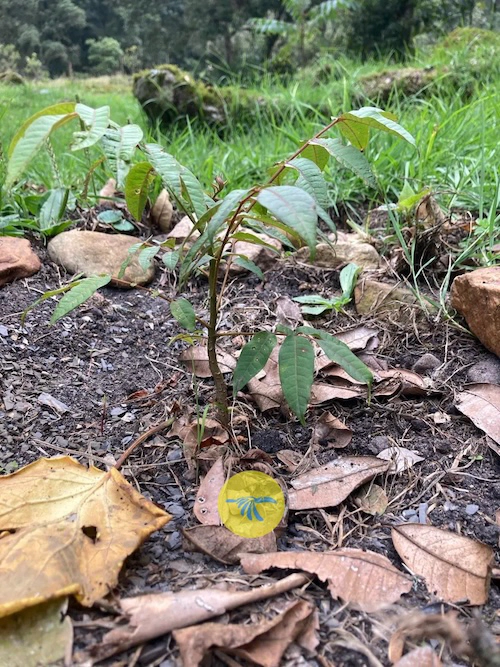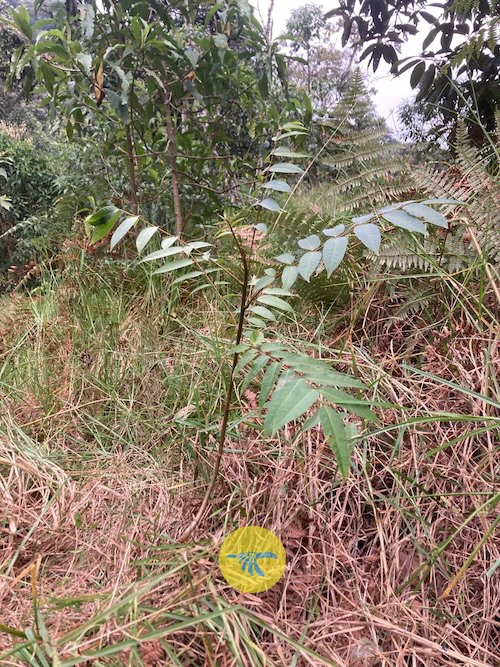Out of control
(⚠️🤖 This post translation from the original text in Spanish was assisted using Llama 3 running locally with Ollama)
Winter should be approaching due to the mix of the traditional rainy season and the expected end of the El Niño. With the recently unpredictable climate, we face deep dilemmas related to control: should we wait for a few weeks before planting to see if it continues to rain? or should we take advantage of the rain even if it’s fleeting? we’ve learned the hard way that planting in the summer is usually a bad idea. We also think about what combination of species we should plant, how far apart they should each tree be from each other, which will be the best planting locations, etc. In the world there are experts for everything and sometimes we follow their advice, but many other times we don’t, we simply experiment. The cost of experimentation in a project like ours can be high, however, the lessons learned are invaluable, so every now and then we let go of fear and make decisions that, although they may be bad, will never be disastrous. And they will never be disastrous because, unless we really set out to destroy or pollute the place, the forest is forging its path. The illusion of control, so persistent in us, achieves some things, but the main show is taken by the apparent randomness of the forest.
There is a species that we really like to plant, not just because it’s native, but also because it was predominant in the primary forest in the reserve area. Older people tell us that cedar (Cedrela montana) used to abound in the zone and that their grandparents used it to produce charcoal and sell it in Bogotá. Once the mountain was cleared, the next step was to cultivate potatoes, and more recently, production shifted mainly to small-scale cattle farming. These three processes not only decimated the forest but also prevented new generations of cedars and other plants from reproducing. Fortunately, some trees remained standing and these individuals that are now in reproductive age (must be at least 40 years old) occasionally send us seeds.
A few weeks ago, Valentina (Mafe’s niece) planted a little cedar tree that we had ready for transplanting in our nursery. We tilled the area well with a shovel and then opened up the hole for the transplant. Valentina planted the sapling, gave it plenty of water, built a protective perimeter around it using rocks, and after planting several more saplings, we returned to the cabin content - transplanting gives great satisfaction, but it’s also a physically exhausting process, especially for us fragile city dwellers. The next day, Mafe went back to the area where we had planted and found another cedar tree growing on its own, just a short distance from the one Valentina had planted, amidst the tangles of kikuyo grass. Nobody had planted it, nobody had cleared away the grass or dug a perfect hole for its roots to develop healthily.


This has happened to us and keeps happening: we carefully plan plantings (which isn’t bad) to ensure they’re successful, but sometimes we make “mistakes” and some saplings die. In contrast, we find cedars, alcaparros, manos de oso, tintos, calabacillos, tunos, cordoncillos, and arrayanes growing in the most adverse conditions. For example, the cedar that Mafe found was growing like a vine, its trunk snaking through the tangles of grass and emerging into the light through a gap to grow vertically “just as it should!”
Our restoration method has evolved over time and with lessons of humility, like the one we mentioned earlier. There’s a key factor in this process: living with or near the trees you plant, not to control but to observe over time.
A rough outline of our current method would be something like:
- The first question to ask yourself, and perhaps the most difficult to answer, is “what are we restoring?” As we mentioned in a previous post, it’s almost impossible to return a place to its former “glory”, and it’s practical (and ecological) value is even questionable.
- Plant whenever you want, however you want, and wherever you want. If it dies or causes others to die, it was probably a bad idea, but also accept and learn from death, don’t lament it.
- If you have a natural source of seeds (trees in reproductive age producing viable seeds), observe where the forest is sowing itself and ask why it’s sowing there. Is it shade? Water? The community of nearby plants? The soil or nutrients?
- Probably this is one of the few steps where control has a real use. We all have our special wishes, but if you want to plant some exotic species (hopefully with a valid reason), or native but not from the area, study it before planting and if you’re unsure, better not plant it.
- Take pictures, write, or draw if that’s your thing. Sit under the sapling you planted or the forest planted for you, feel what it feels like to be there. If you’re going to take on the task of planting a forest, do it with enthusiasm.
- Remember that the place you’re restoring will likely thrive decades or centuries after you’re no longer here. You’ll have to let go of control eventually.
What we want to emphasize is that there are many paths to restoration and no formulas. Although this “method” has worked for us, in reality, there should be as many methods as projects. Academic and scientific knowledge is necessary, but it has its limits because, despite trying to be universal, it’s based on contexts that very likely differ from the local context. Traditional knowledge, especially from the region, is more coherent not only with geography but with the history of the place. To complement these two, experimentation is needed. Restoration is a two-way path because each project has its own unique character that not only generates changes in the restored area but also in the individuals who are restoring it.